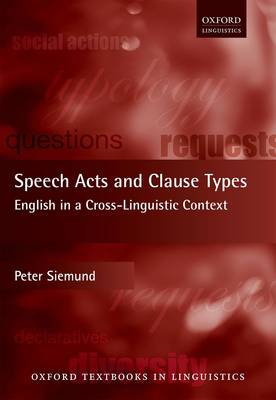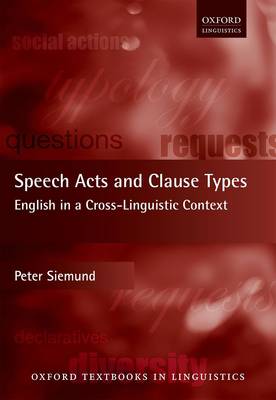
- Afhalen na 1 uur in een winkel met voorraad
- Gratis thuislevering in België vanaf € 30
- Ruim aanbod met 7 miljoen producten
- Afhalen na 1 uur in een winkel met voorraad
- Gratis thuislevering in België vanaf € 30
- Ruim aanbod met 7 miljoen producten
Zoeken
€ 107,95
+ 215 punten
Omschrijving
This book is an introduction to the relationship between the morphosyntactic properties of sentences and their associated illocutionary forces or force potentials. The volume begins with several chapters dedicated to important theoretical and methodological issues, such as sentence and utterance meaning, illocutionary force, clause types, and cross-linguistic comparison. The bulk of the book is then composed of chapter-length case studies that systematically investigate typologically prominent clause types and their forces, such as declaratives and assertions, interrogatives and questions, and imperatives and commands. These case studies begin with an overview of the necessary theoretical foundations, followed by a discussion of the grammatical structures of English, and an assessment of the relevant cross-linguistic facts. Each chapter ends with a succinct summary of the most important findings, practice exercises, and recommendations for further reading and research. Overall, the book works towards developing a gradient model of clause types that goes substantially beyond the traditional distinction between major and minor clause types. It draws on insights from linguistics, philosophy, and sociology, and may be used as a textbook for undergraduate or graduate courses in semantics, pragmatics, and morphosyntax.
Specificaties
Betrokkenen
- Auteur(s):
- Uitgeverij:
Inhoud
- Aantal bladzijden:
- 452
- Taal:
- Engels
- Reeks:
Eigenschappen
- Productcode (EAN):
- 9780198718147
- Verschijningsdatum:
- 1/05/2018
- Uitvoering:
- Paperback
- Formaat:
- Trade paperback (VS)
- Afmetingen:
- 170 mm x 244 mm
- Gewicht:
- 793 g

Alleen bij Standaard Boekhandel
+ 215 punten op je klantenkaart van Standaard Boekhandel
Beoordelingen
We publiceren alleen reviews die voldoen aan de voorwaarden voor reviews. Bekijk onze voorwaarden voor reviews.











